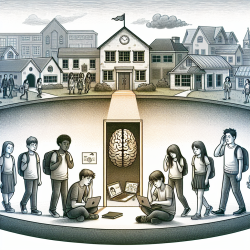You Won't Believe How NATO's Mental Health Strategies Can Transform Your Practice!

For practitioners in the field of mental health, especially those providing services to schools, the findings from the research article "Deployment-related mental health support: comparative analysis of NATO and allied ISAF partners" can be transformative. The comparative analysis of mental health support strategies used by NATO and allied ISAF partners offers valuable insights that can be adapted to improve your practice. Here's how you can leverage these strategies to enhance your mental health services.
Key Takeaways from NATO's Mental Health Strategies
The research highlights several key methods and structures for delivering mental health support during military deployments. These methods focus on training, prevention, early identification, intervention, and aftercare. Here are some actionable insights:
- Training and Education: All forces emphasized the importance of training and education to strengthen mental resilience. Implementing similar training programs in schools can help students develop coping mechanisms and resilience against stress.
- Early Detection and Intervention: Providing mental health support close to the front line aimed at early detection and intervention can be adapted for schools. Early identification of mental health issues in students can lead to timely interventions, reducing the long-term impact.
- Peer Support: Encouraging peer support and leader-led “after action” reviews can be beneficial. In a school setting, this can translate to peer counseling programs and teacher-led discussions to address mental health concerns.
- Decompression and Reintegration: The concept of decompression and reintegration training used by the US military can be adapted for students returning to school after significant events or breaks. This can help them transition smoothly and address any mental health issues that may have arisen.
Implementing These Strategies in Your Practice
Adapting these military strategies to a school setting can enhance the effectiveness of mental health services. Here are some steps to get started:
- Develop Training Programs: Create training modules for students and staff that focus on building mental resilience and coping strategies. These can be integrated into the school curriculum or offered as workshops.
- Establish Early Detection Protocols: Implement screening tools and protocols to identify students at risk of mental health issues. Training teachers and staff to recognize early signs can lead to timely interventions.
- Foster Peer Support Networks: Set up peer counseling programs where students can support each other. Provide training to peer counselors to equip them with the necessary skills.
- Introduce Decompression Activities: Organize activities and sessions for students to unwind and process their experiences after significant events or breaks. This can include mindfulness sessions, group discussions, and recreational activities.
Encouraging Further Research
While the insights from the NATO study are valuable, it's crucial to continue researching and adapting these strategies to fit the unique needs of your practice. Encourage your team to stay updated with the latest research and be open to integrating new methods that can improve mental health outcomes for students.To read the original research paper, please follow this link:
Deployment-related mental health support: comparative analysis of NATO and allied ISAF partners
Citation: Vermetten, E., Greenberg, N., Boeschoten, M. A., Delahaije, R., Jetly, R., Castro, C. A., & McFarlane, A. C. (2014). Deployment-related mental health support: comparative analysis of NATO and allied ISAF partners. European Journal of Psychotraumatology, 5. https://doi.org/10.3402/ejpt.v5.23732










